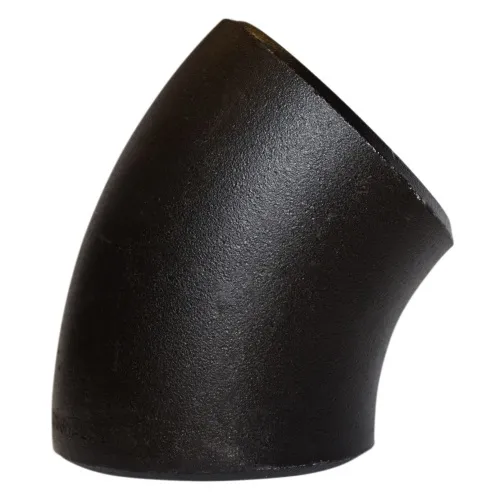-
Cangzhou Yulong Steel Co., Ltd.
-
Phone:
+86 13303177267 -
Email:
admin@ylsteelfittings.com
- English
- Arabic
- Italian
- Spanish
- Portuguese
- German
- kazakh
- Persian
- Greek
- French
- Russian
- Polish
- Thai
- Indonesian
- Vietnamese
- Zulu
- Korean
- Uzbek
- Hindi
- Serbian
- Malay
- Ukrainian
- Gujarati
- Haitian Creole
- hausa
- hawaiian
- Hebrew
- Miao
- Hungarian
- Icelandic
- igbo
- irish
- Japanese
- Javanese
- Kannada
- Khmer
- Rwandese
- Afrikaans
- Albanian
- Amharic
- Armenian
- Azerbaijani
- Basque
- Belarusian
- Bengali
- Bosnian
- Bulgarian
- Catalan
- Cebuano
- China
- China (Taiwan)
- Corsican
- Croatian
- Czech
- Danish
- Esperanto
- Estonian
- Finnish
- Frisian
- Galician
- Georgian
- Kurdish
- Kyrgyz
- Lao
- Latin
- Latvian
- Lithuanian
- Luxembourgish
- Macedonian
- Malgashi
- Malayalam
- Maltese
- Maori
- Marathi
- Mongolian
- Myanmar
- Nepali
- Norwegian
- Norwegian
- Occitan
- Pashto
- Dutch
- Punjabi
- Romanian
- Samoan
- Scottish Gaelic
- Sesotho
- Shona
- Sindhi
- Sinhala
- Slovak
- Slovenian
- Somali
- Sundanese
- Swahili
- Swedish
- Tagalog
- Tajik
- Tamil
- Tatar
- Telugu
- Turkish
- Turkmen
- Urdu
- Uighur
- Welsh
- Bantu
- Yiddish
- Yoruba

Dec . 07, 2024 02:43 Back to list
en 1092 1 type 33
Understanding EN 1092-1 Type 33 Flanges A Comprehensive Overview
EN 1092-1 is a well-established European standard that specifies the technical requirements for flanges. Among the various flange types described within this standard, Type 33 flanges hold particular significance in various industrial applications. This article aims to provide a thorough understanding of EN 1092-1 Type 33 flanges, highlighting their characteristics, applications, advantages, and considerations.
What are EN 1092-1 Type 33 Flanges?
EN 1092-1 Type 33 flanges are circular flange plates designed to be welded to pipes. They feature a flat, raised face that allows for secure and efficient sealing when coupled with a corresponding flange. The key dimensions of Type 33 flanges include the bolt hole diameters, the number of bolt holes, and the flange thickness, which can vary based on nominal pipe diameters (DN) and pressure ratings.
Type 33 flanges are generally manufactured from various materials, such as carbon steel, stainless steel, and alloys, enabling them to accommodate different operating conditions and environments. The standard ensures that flanges are produced with quality and consistency, following specific manufacturing and testing guidelines.
Characteristics and Specifications
The EN 1092-1 standard lays out necessary specifications for Type 33 flanges, including
1. Material Standards Flanges can be made from materials like carbon steel or stainless steel, which must conform to standards such as EN 10025 for steel grades.
2. Dimensions and Tolerances The specifications cover various dimensions, including the flange diameter, thickness, and bolt hole pattern. These dimensions are critical for ensuring compatibility with piping systems.
3. Pressure Ratings Type 33 flanges are rated according to pressure classes, typically categorized from PN 6 to PN 40, indicating the maximum pressure the flange can withstand at a given temperature.
4. Face Types They feature a flat or raised face, with raised face flanges providing a more effective sealing surface for gaskets.
en 1092 1 type 33

Applications of EN 1092-1 Type 33 Flanges
Type 33 flanges find applications in various industries, including
- Oil and Gas Used in pipeline systems for transporting oil and gas, where they must withstand high pressure and harsh conditions. - Chemical Processing Employed in chemical plants to connect piping systems where corrosive substances are handled. - Water Treatment Utilized in water supply and treatment facilities where secure connections are necessary to prevent leaks. - Construction and HVAC Used in building systems for heating, ventilation, and air conditioning.
Advantages of Using Type 33 Flanges
There are several advantages to using EN 1092-1 Type 33 flanges
1. Versatility Their adaptability to various materials and pressure ratings makes them suitable for diverse applications. 2. Reliability Manufactured according to strict standards, Type 33 flanges provide a dependable solution for pipe connections. 3. Ease of Installation The design facilitates straightforward installation and maintenance, allowing for efficient assembly and disassembly of piping systems.
Considerations and Best Practices
When selecting EN 1092-1 Type 33 flanges, several factors should be considered
- Compatibility Ensure that the flange size and material match the specifications of the piping system. - Environment Consider environmental factors, such as temperature and exposure to chemicals, that may affect the flange's performance. - Standards Compliance Always verify that the flanges conform to the EN 1092-1 standard for quality assurance.
Conclusion
EN 1092-1 Type 33 flanges play a crucial role in various industrial applications, ensuring secure and efficient pipe connections. Understanding their characteristics, applications, and advantages can greatly assist engineers and technicians in making informed choices when designing and maintaining piping systems. By adhering to the specifications laid out in the EN 1092-1 standard, industries can ensure safety, reliability, and efficiency in fluid transport systems.
Latest news
-
ANSI 150P SS304 SO FLANGE
NewsFeb.14,2025
-
ASTM A333GR6 STEEL PIPE
NewsJan.20,2025
-
ANSI B16.5 WELDING NECK FLANGE
NewsJan.15,2026
-
ANSI B16.5 SLIP-ON FLANGE
NewsApr.19,2024
-
SABS 1123 FLANGE
NewsJan.15,2025
-
DIN86044 PLATE FLANGE
NewsApr.19,2024
-
DIN2527 BLIND FLANGE
NewsApr.12,2024
-
JIS B2311 Butt-Welding Fittings LR/SR 45°/90° /180°Seamless/Weld
NewsApr.23,2024











